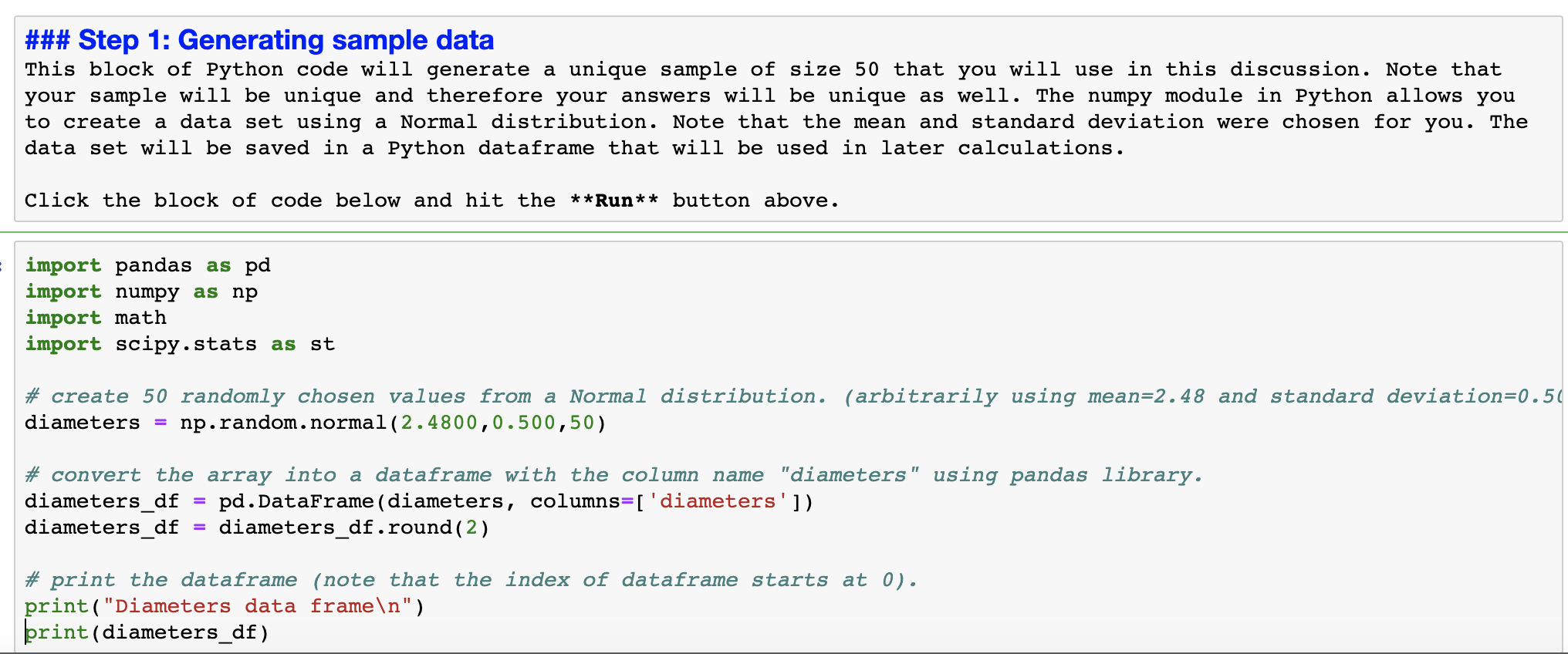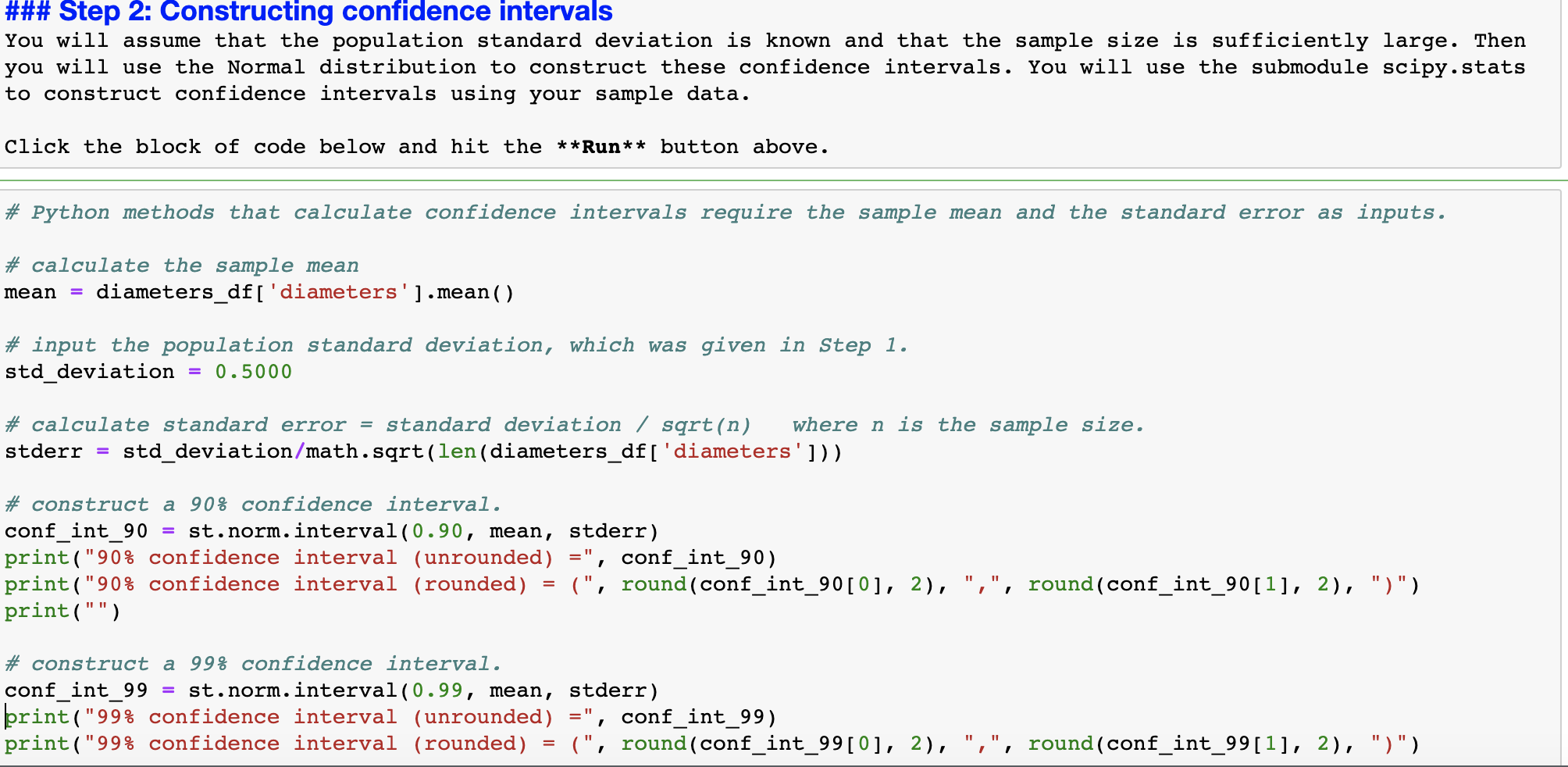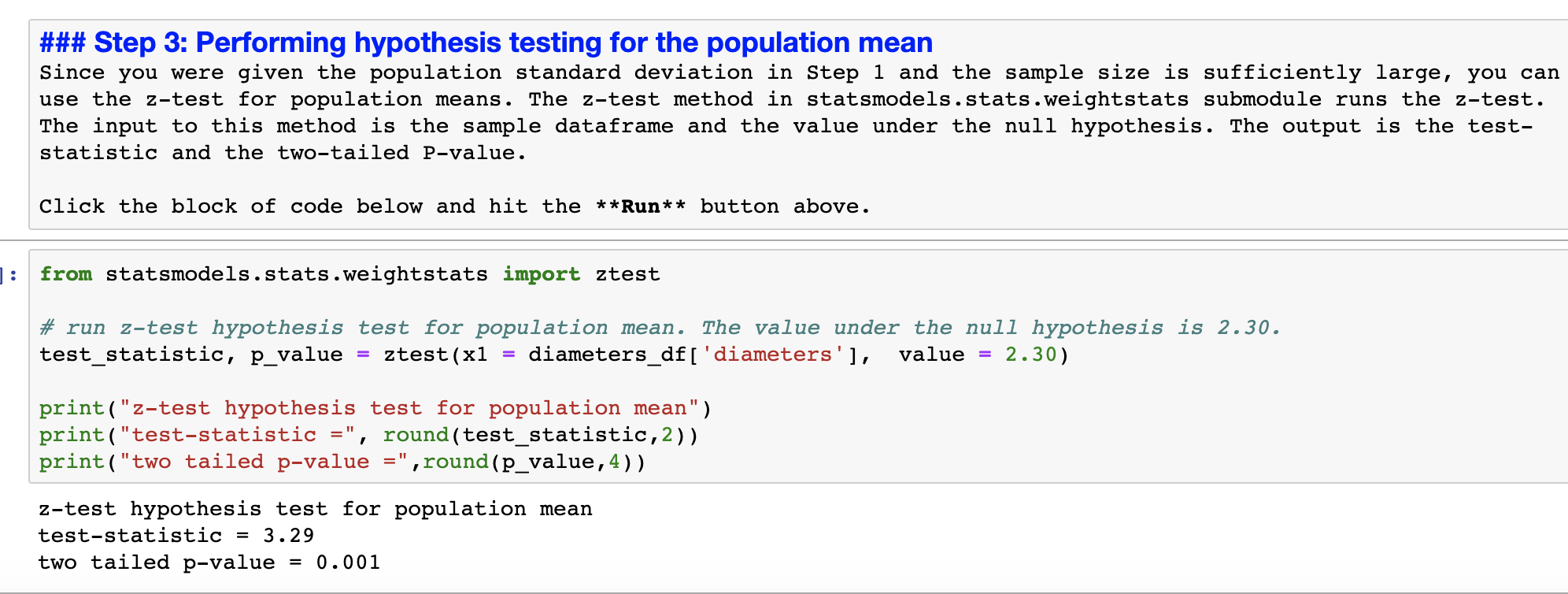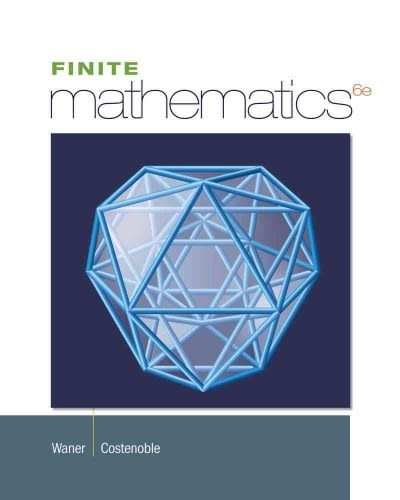Answered step by step
Verified Expert Solution
Question
1 Approved Answer
Please address the following items using the attached screenshots.Be sure to answer the questions about both confidence intervals and hypothesis testing. In the Python script,
Please address the following items using the attached screenshots.Be sure to answer the questions about both confidence intervals and hypothesis testing.
- In the Python script, you calculated the sample data to construct a 90% and 99% confidence interval for the average diameter of ball bearings produced from this manufacturing process. These confidence intervals were created using the Normal distribution based on the assumption that the population standard deviation is known and the sample size is sufficiently large. Report these confidence intervals rounded to two decimal places. See Step 2 in the Python script.
- Interpret both confidence intervals. Make sure to be detailed and precise in your interpretation.
It has been claimed from previous studies that the average diameter of ball bearings from this manufacturing process is 2.30 cm. Based on the sample of 50 that you collected, is there evidence to suggest that the average diameter is greater than 2.30 cm? Perform a hypothesis test for the population mean at alpha = 0.01.
In your initial post, address the following items:
- Define the null and alternative hypothesis for this test in mathematical terms and in words.
- Report the level of significance.
- Include the test statistic and the P-value. See Step 3 in the Python script. (Note that Python methods return two tailed P-values. You must report the correct P-value based on the alternative hypothesis.)
- Provide your conclusion and interpretation of the results. Should the null hypothesis be rejected? Why or why not?





Step by Step Solution
There are 3 Steps involved in it
Step: 1

Get Instant Access to Expert-Tailored Solutions
See step-by-step solutions with expert insights and AI powered tools for academic success
Step: 2

Step: 3

Ace Your Homework with AI
Get the answers you need in no time with our AI-driven, step-by-step assistance
Get Started


